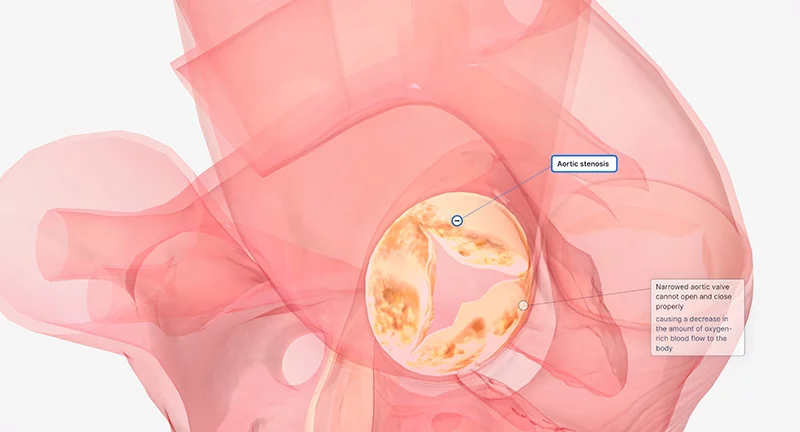
Often developing gradually over time, aortic valve stenosis is a major, perhaps deadly, cardiac problem. Understanding the risks of this illness and the need for early discovery is especially important if you are over forty and have risk factors such as high blood pressure, high cholesterol, or a history of heart disease.
What happens in aortic stenosis?
The aortic valve allows blood high in oxygen to pass from your heart to the rest of your body. This valve narrows in aortic stenosis, therefore limiting blood flow and increasing cardiac workload. Many people are unaware they have it as initially symptoms may be weak or even absent. As the condition progresses, the heart may find it difficult to pump efficiently, which may cause major problems like heart failure, stroke, and even sudden cardiac death.
The progressive nature of aortic stenosis is among the most worrying features of it. The constricted valve strains the heart muscle over time, which could lead to tiredness, chest discomfort, dizziness, and dyspnea. Many patients write off these symptoms as indicators of stress or age, which could be a fatal mistake. Once severe aortic stenosis develops, the average lifetime without intervention is about two to three years. Therefore, early diagnosis and treatment are critical.
Some people—especially those with a bicuspid aortic valve—are at considerably greater risk. Premature valve loss may result from this congenital disorder when the valve contains only two leaflets instead of the usual three. Whether you have a family history of bicuspid aortic valve disease or have received a diagnosis, routine cardiologist monitoring is crucial to avoid problems.
Is aortic stenosis curable?
Luckily, advances in medicine have made aortic stenosis a curable disorder. Medication and changes in lifestyle may help control symptoms and slow down development in mild degrees. But valve replacement becomes essential after the illness gets really serious. Minimally invasive techniques such as transcatheter aortic valve replacement (TAVR) and traditional open-heart surgery have revolutionized treatment results, offering patients a fresh start with significantly reduced risks.
If you are over forty and have symptoms like inexplicable tiredness, dyspnea, or chest pain, do not disregard them. Early aortic stenosis detection made possible by a basic echocardiography might even save your life.
Learn more about aortic valve stenosis


